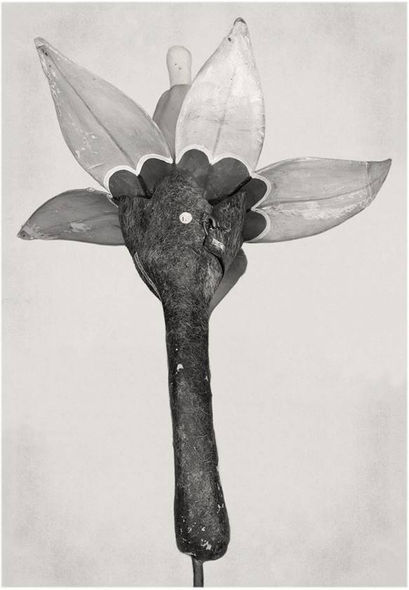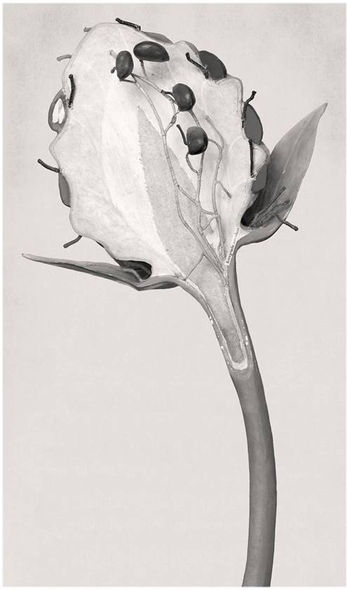Artist, scholar and associated professor in Design and Fine Arts at the Complutense University of Madrid (UCM), Linarejos Moreno has been an invited Fulbright scholar at Rice University in Houston and a visiting professor of The School of Art in the College of Liberal Arts and Social Sciences at the University of Houston.
Her work explores subjectivity as a mode of resistance to reification, focusing on the non-productive uses of industrial spaces and scientific representation as a tool for interrogating modernity. Her research interests include the sociology of science/technology and the relationship between capital and contemporary forms of Romanticism.
Major solo institutional exhibitions include: Stop Vuelvo Pronto Stop (on view until 04/12/2020) at CentroCentro (Madrid), The Cloud Chamber (2018) at the Transart Foundation for Art and Anthropology (Houston) and the Centro de Arte de Alcobendas (Madrid), Tabularia. Laboratorios de Ciencia e Imaginación (2016) at the Royal Botanical Gardens (Madrid- PHE16), La construcción de una ruina (2016) in the Tabacalera. Promoción del Arte (Madrid- PHE16) – both of which formed part of the international photography festival PHotoEspaña, and Artifactual Realities (2016) at the Station Museum (Houston). Continue reading...
Artist, scholar and associated professor in Design and Fine Arts at the Complutense University of Madrid (UCM), Linarejos Moreno has been an invited Fulbright scholar at Rice University in Houston and a visiting professor of The School of Art in the College of Liberal Arts and Social Sciences at the University of Houston.
Her work explores subjectivity as a mode of resistance to reification, focusing on the non-productive uses of industrial spaces and scientific representation as a tool for interrogating modernity. Her research interests include the sociology of science/technology and the relationship between capital and contemporary forms of Romanticism.
Major solo institutional exhibitions include: Stop Vuelvo Pronto Stop (on view until 04/12/2020) at CentroCentro (Madrid), The Cloud Chamber (2018) at the Transart Foundation for Art and Anthropology (Houston) and the Centro de Arte de Alcobendas (Madrid), Tabularia. Laboratorios de Ciencia e Imaginación (2016) at the Royal Botanical Gardens (Madrid- PHE16), La construcción de una ruina (2016) in the Tabacalera. Promoción del Arte (Madrid- PHE16) – both of which formed part of the international photography festival PHotoEspaña, and Artifactual Realities (2016) at the Station Museum (Houston). Continue reading...
ART FORMS IN MECHANISM
“...the meticulous observation of these photographs reveals gears and numbers. What we believed to be natural proves to be a didactic mechanism and representation, powerfully revealing the way one man interpreted the natural world in his own time, with all its psychological burden, its subjectivity and otherness.”
LINAREJOS MORENO, 2010
TABULARIA. LABORATORIES OF SCIENCE AND IMAGINATION
___________________________________
FABIOLA LÓPEZ DURAN

The work of Linarejos Moreno (Madrid 1974) has developed as an apparatus for interrogating Modernity through the liminal scenarios that the gradual globalization of European industrial capitalism has left in its wake. Her family’s connection with the world of manufacturing has undoubtedly determined the course of her artistic investigation. The laboratory of her initiation was indeed the spaces and machinery of Spanish industry and the political and social consequences of its decline since the economic crisis of 2007. However, Linarejos privileges the evolving aspect of the work and its reinventive power over the spaces of memory that the latter constructs. Just like ruins that, in their fragmentary embodiment, are wrenched out of their original use, materializing, in the words of Georg Simmel as perspective – as places of the imagination – and not as a romantic reference to a forsaken past. In this sense, the subjectivity in Linarejos’s work emerges as a strategy of resistance to the reification characteristic of capitalist societies and as a social response to a Modernity that has already revealed its dark side.
In 2009, Linarejos came across the 19th-century botanical models held in the scientific cabinets belonging to Madrid’s historical institutes. Intrigued by the way these objects straddled artistic and scientific terrain, and by the ludic universe that reveals itself through a system of hinges, gears, hooks and acronyms, Linarejos embarked upon one of the two projects included in this exhibition: Art Forms in Mechanism. This took shape through a series of linked experiments: first, the appropriation of the introductory text to Urformen der Kunst (Art Forms in Nature), Karl Blossfeldt’s celebrated book of botanical photographs dating from 1928, in which Linarejos replaced the word “nature” with “mechanism.” Secondly, using the same scientific systematization and uniformity of frames, borders and backgrounds that characterize Blossfeldt’s photographs, Linarejos compiled a photographic record of the botanical models. Their subsequent materialization in vast enlargements printed on sackcloth reveals how the models, despite their supposed objectivity, did not offer a scientific approximation of nature but rather the interpretation of the natural world that humanity once made.
The collaborative project Tabularia, from which this exhibition takes its name, was born out of the encounter between art and architectural historian Fabiola López-Durán and Linarejos when the latter moved to the United States in 2011, after being awarded a Fulbright grant. With the goal of exploring the terrain shared by art and science, the project interrogates the apparently mutually exclusive notions of subjectivity and objectivity, fiction and reality, culture and nature, which have been generally attributed to this duo. Tabularia links academic research and artistic output, and begins with this first laboratory in which Linarejos includes a photograph of the studio of the police officer and founder of anthropometric identification, Alphonse Bertillon, taken from the archives of the Paris prefecture, alongside her own archive of artifice and imagination. The ultimate goal of this project is to trace the lines that intimately connect artistic and scientific representations to the political and social lives of its creators, which both shape, and are shaped, by the world around them.
FABIOLA LÓPEZ DURAN. Introduction to the inaugural exhibition of PHotoEspaña PHE16 International Photography Festival, Real Jardín Botánico de Madrid. CSIC: Linarejos Moreno, Tabularia. Laboratorios de Ciencia e imaginación, 2016. The text was included in the artist’s book Linarejos Moreno, Art Forms in Mechanism. Madrid: Editorial Turpín 2017.
__________________________
SURPIK ANGELINI
Through her photographic art, Linarejos Moreno restores the aura of obsolete objects or ruins, using the very means by which Walter Benjamin predicted the decline of art’s singular presence or “aura” in the past. Thus, resisting photography’s role in the reproduction and mass dissemination of the “cult” image, Linarejos Moreno creates photographic works that take on a unique tactile presence, at times extending into viewer’s space through stunning “mis en scenes”. More importantly, the artist shares with Benjamin a keen interest in photography’s uncanny capacity to capture unseen by the naked eye, as her images unleash what the philosopher called the medium’s “optical unconscious”. Through the present work, Art Forms in Mechanism, Linarejos Moreno depicts the mechanical underpinnings in the design of XIX century botanical models, revealing an entire era’s mechanistic vision of nature like a repressed memory released in consciousness.
SURPIK ANGELINI, Text included in the artist’s book Linarejos Moreno, Art Forms in Mechanism. Madrid: Editorial Turpín 2017.























